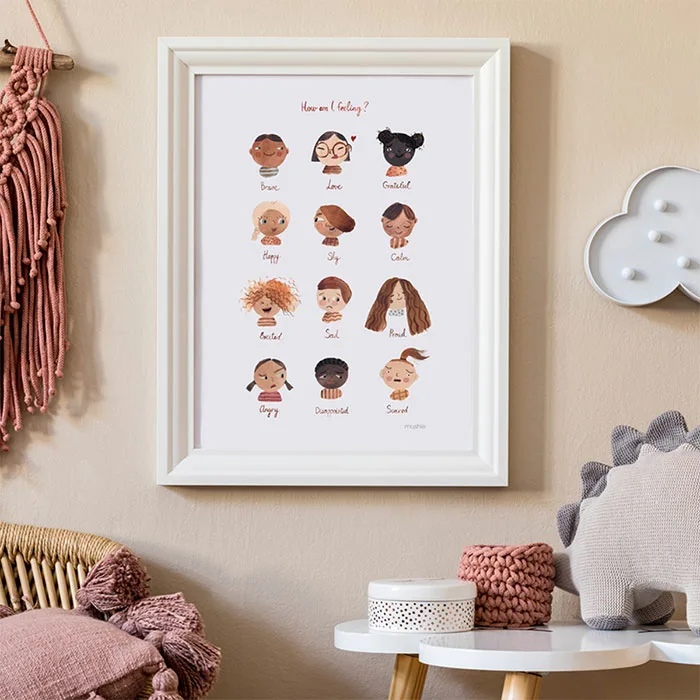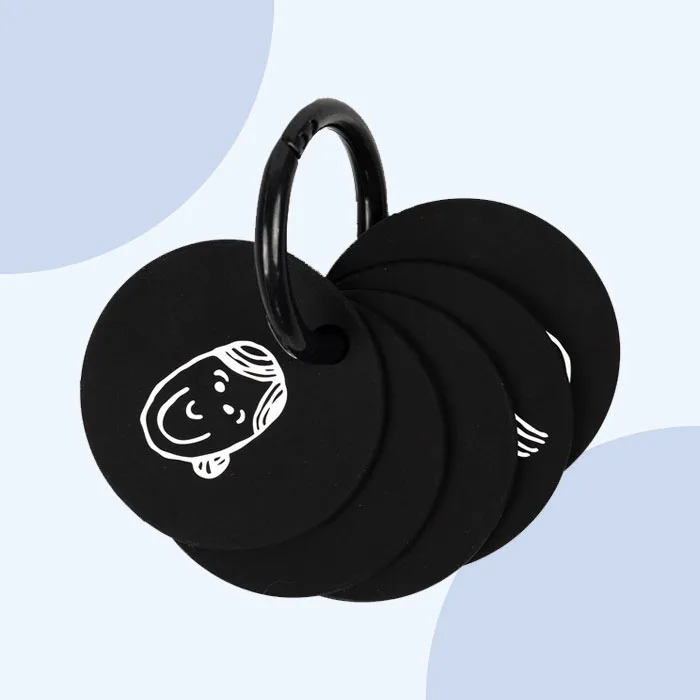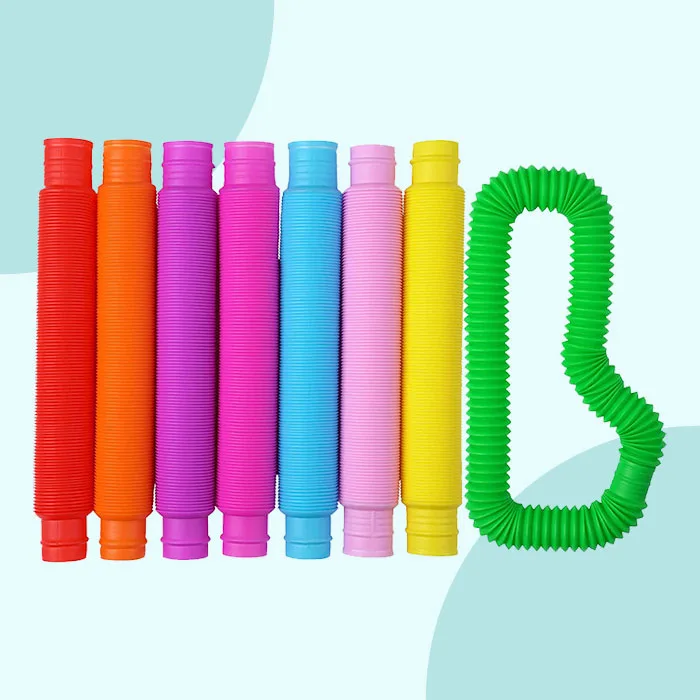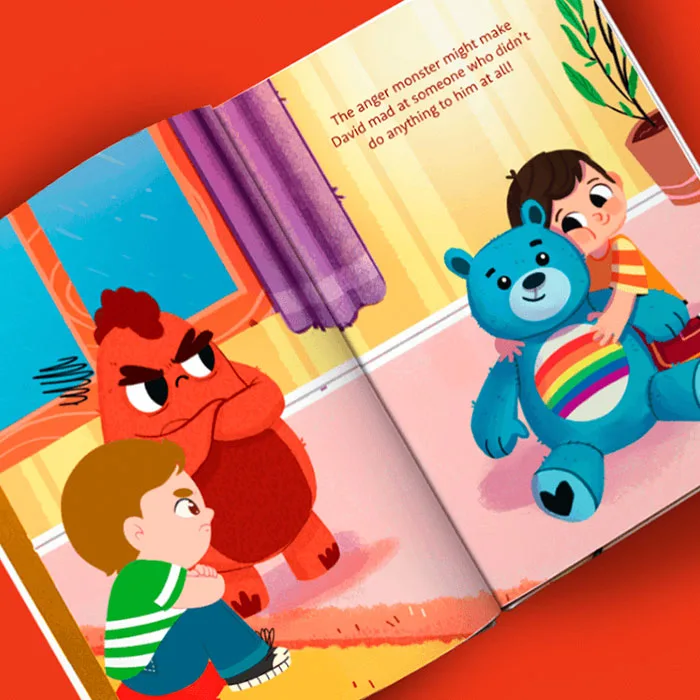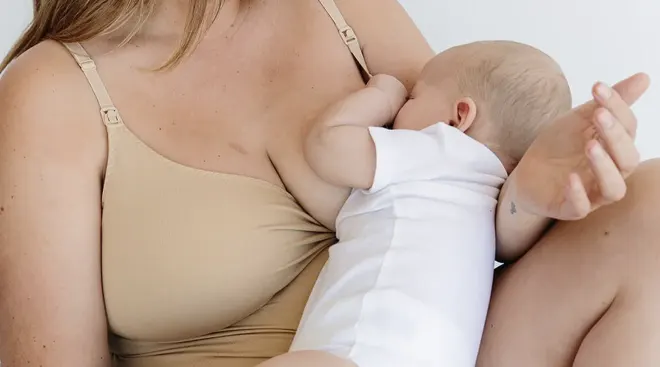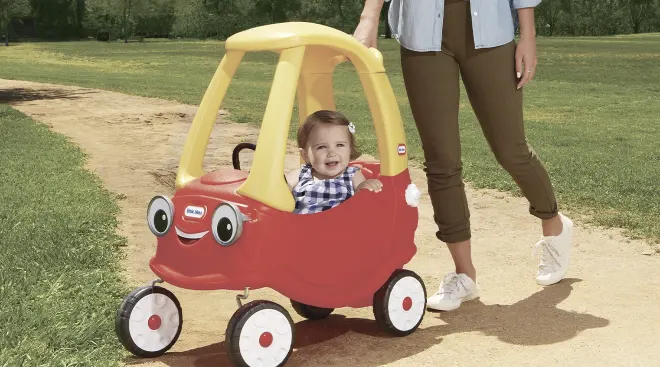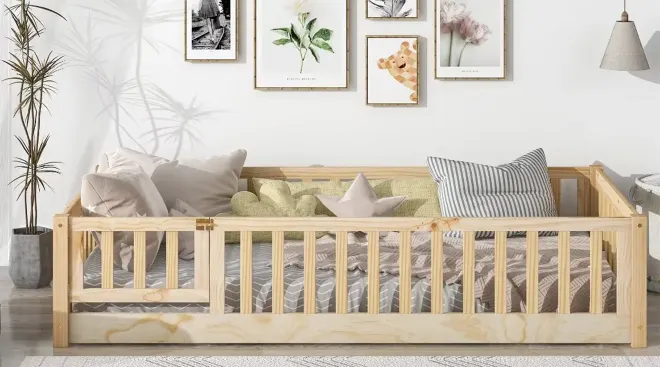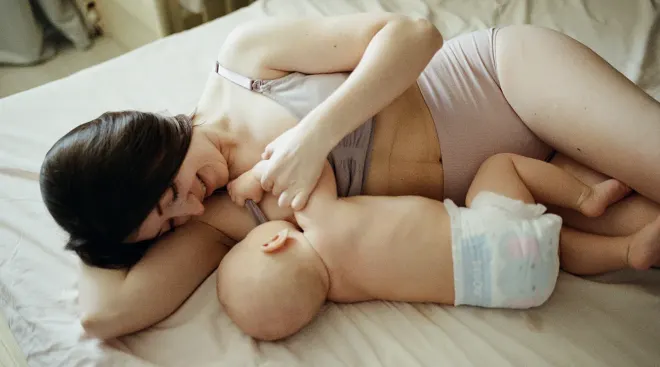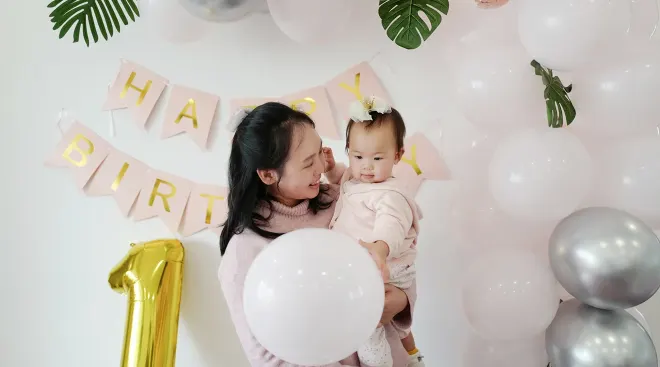Calm-Down Corners for Toddlers: Why They Work and How to Make One
Toddlers are complex creatures. They’re mastering new skills, hitting major milestones and learning about life every day. All of this emotional and social development is incredibly exciting, but it can also feel confusing and disorienting for little ones. Suffice to say that it can be difficult for your mini to deal with the tidal wave of emotions that go hand-in-hand with their burgeoning sense of self. The result? Epic temper tantrums (gulp). Toddlers can go from happily pottering about as usual to screaming and stomping in the blink of an eye. The reassuring news is that meltdowns, fits and tantrums are very common and very normal (trust us, the “terrible twos” are real). And while some behavioral issues are par for the course, it’s important to teach kiddos to deal with those big feelings in a healthy way. A calm-down corner can help. This dedicated cool-down space allows children some quiet time to recognize and process new emotions. But what exactly is a calm-down corner, what are the benefits and how can you create one in your home? Read on for expert tips and inspiration.
A calm-down corner—also known as a calming corner or a quiet corner—is a dedicated area that children can enter when emotions are running high. Basically, it’s “a safe space for self-regulation,” says Reena B. Patel, LEP, a parenting expert and educational psychologist in San Diego, California. “[It] helps to facilitate a child’s ability to reset and address the challenge they are dealing with in a structured, safe and consistent manner.”
You should be able to see everything that’s happening in your child’s calm-down corner, and safety should be the top priority. What’s more, while a calm-down corner works for many families, it might not be your kiddo’s cup of tea—or it may not particularly jive with your parenting style. Maurice Elias, PhD, the director of Rutgers University Social-Emotional Learning Lab emphasizes that using a calm-down corner is a learning process. Remember, the goal is to help your child get better at regulating their emotions—so don’t be put off if this approach doesn’t work from the get-go.
Ideally, you want to proactively suggest the calm-down corner if and when you think your little one is on the verge of a tantrum caused by anger or frustration; a soothing setting may help diffuse the situation. Warning signs, such as a red face, clenched fists or jumping up and down might tip you off. Elias advises acknowledging these “feeling footprints” so your child can start to identify them too.
Initially, you may need to stay with your toddler in the corner—especially if they’re overwhelmed or distressed. It’s also important to praise your child when they show signs of self-control. “From repeated experiences, kids often value the calm-down corner and will seek it out before getting overly upset,” says Elias. Either way, he stresses that it’s important to position your calm-down corner as a positive place; it shouldn’t be secluded or used as a punishment or time-out.
It’s important to note that this approach is not appropriate for babies; Patel recommends starting your calm-down corner ritual when your child is at least 18 months old. And you should expect to start small. The amount of time your kiddo spends in the calm-down corner will vary based on their age. As a general rule of thumb, begin with one minute; then, check to see if they’d like a little more quiet time.
Although a calm-down corner can be a useful preventative tool, you’ll want to refrain from overusing it. It’s not the answer for every problem, and it should be used in tandem with other tactics, such as verbal nurturing and positive reinforcements (think sticker charts!), says Patel.
A calm-down corner should be set up in a quiet place that’s fully visible and free from distractions. You can add soft furnishings to give it a cozy feel as well as soothing sensory items that promote mindfulness and reflection. Here are some other expert tips to help inspire your own toddler-friendly calming corner at home:
• Set boundaries and role play. Talk to your child about what’s expected of them while they’re in the calm-down corner. Patel recommends walking through the rules when your child is relaxed and content. Next, teach your child how to use each item in their calming corner, and do a simple role play of what you’d like them to do inside this space. Practice simple mindfulness techniques and breathwork that they can use when they’re feeling overwhelmed.
• Add sensory items. Sensory items stimulate our physical senses and help return the body to its relaxed, baseline state, explains Patel. Soft furnishings like a beanbag chair or furry rug work well, as do fidget toys and stress balls.
• Use visuals. In the heat of the moment, your toddler might not remember what they need to do to calm themselves down. A visual chart will help outline the steps they can take to self-regulate and relax. A body-scan visual chart is also helpful, as kids can easily identify their current emotional state and show you how they feel—even if they don’t have the vocabulary to express themselves.
• Make it a technology-free space. Remove devices like iPads, televisions, cell phones and electronic or battery-operated toys from this space, so that your little one is free to meditate and reflect without any distractions. (You might consider having a sound machine in this space.)
• Be consistent. It’ll take time for you both to get used to this new technique, so be patient. With consistent use and guidance, your child will recognize that a calm-down corner is a positive space to go to when they need a moment to decompress.
Ready to design your own calm-down corner at home? First, you’ll want to stock up on a few comforting essentials. Below, our picks for the best products to create a toddler-friendly zen space.
Mushie Feelings Poster
Pin this feelings poster to the wall of your calm-down corner, so your kiddo can use it as a visual guide to decipher their emotions. It has 12 different illustrations depicting common feelings like sadness, anger and excitement.
Buy it: $22, TheTot.com
Pottery Barn Kids Labradoodle Faux Fur Anywhere Beanbag
This beanbag is super-soft and inviting, making it the perfect toddler seat for your little one’s calm-down corner. The dog-inspired design is covered in plush faux fur, with floppy ears that your child can stroke and tug on. Plus, it’s light enough for your child to lift and move, and it has a machine-washable cover.
Buy it: $205, PotteryBarnKids.com
KISEER Sand Timer
Elias recommends using a sand timer to measure the amount of time your child spends in the calm-down corner. Plus, watching the sand filter through will have a soothing effect. This set includes six timers ranging from 30 seconds to 10 minutes.
Buy it: $8 for a set of 6, Amazon.com
Bohemian Mama Home Under The Sunshine Rug
A rug can be used to set the scene in the calm-down corner. We like this one from Bohemian Mama; it’s thick, cozy and is decorated with a soothing sunrise.
Buy it: $118, BohemianMama.com
Fisher-Price Twinkle & Cuddle Cloud Soother
Music can de-escalate a situation if kids are slow to calm down, says Patel. Instead of blasting “Baby Shark,” try playing some relaxing nature sounds or white noise. This baby sound machine by Fisher-Price features a playlist of gentle music and emits a soothing light show.
Buy it: $37,71, Amazon.com
Primary Science Sensory Tubes
A calm-down jar is an awesome tool to soothe stressed-out tots. Usually filled with colored water or glitter, kids shake the jars and watch the particles float down and settle at the bottom. Buy a ready-made glitter jar or use these clever tubes to make your own.
Buy it: $40 for a set of 4, LearningResources.com
Wonder & Wise Shapes of Emotions
This clever wheel helps kids with a limited vocabulary identify and communicate their emotions. The wooden toy has 10 removable pieces designed to look like faces. Your child can point the dial to the facial expression that best reflects how they’re feeling, upon entering or leaving the calm-down corner.
Buy it: $49, Maisonette.com
Dimpl Popper
Little digits can’t resist poking and prodding a Dimpl Popper. It’s a great way for kids to release pent-up emotions and practice mindfulness as they become absorbed in the task at hand.
Buy it: $13, FatBrainToys.com
Little Buddhi Kids Cuddly Bear Meditation Cushion
This meditation cushion would make a comfy addition to any calm-down corner. It’s made from soft, organic cotton and is embroidered with a sweet, sleeping bear face. Your little one can perch on top or hug it close as they practice finding their zen. Bonus: This cushion comes with a free meditation guide for kids.
Buy it: $108, TheTot.com
Bella Tunno Feeling Friends Flash Cards
How about a calm-down tool that adapts to suit your child’s developmental stage? This teether set is great for infants with sore gums and doubles as a set of feelings flashcards for toddlers.
Buy it: $13, Maisonette.com
Vanblue 8 Pcs Pop Tube Fidget Toy
It can be difficult to sit quietly when you’re stressed or upset, but this fidget-toy set can help ease tension. When the bendy tubes are popped, stretched and contracted, they emit a cool sound that adds to the sensory experience.
Buy it: $7 for a set of 8, Amazon.com
Generation Mindful The Time-In Toolkit
Don’t have time to gather supplies? The Time-In Toolkit has everything you need to build a calm-down corner at home. This game-changing set is filled with research-based toys, posters and activity sheets designed to teach kids empathy, emotional intelligence and resilience.
Buy it: $59, GenMindful.com
Warmies Calico Cat
Stuffed animals help toddlers self-soothe when they’re experiencing big emotions. This furry friend scores serious brownie points, as it’s scented with calming French lavender and can be heated in the microwave to provide warmth and comfort.
Buy it: $30, Warmies.com
Rose & Rex Calm Mind Kit
This clever kit contains everything you need to introduce mindfulness to your little one in a playful way. Created by childhood development and wellness experts, this set includes three mindfulness toys and a deck of activity cards that each highlight a variety of meditation, movement and breathing exercises.
Buy it: $60, roseandrex.com
Playlearn Cuddle Ball Knot Pillow
Soft furnishings are key to creating a relaxing calming-corner for toddlers—and this cuddle ball is hard to beat. It’s made from a touchably soft material, with slots that toddlers can slide their arms into to hold it close to their chest.
Buy it: $40, Amazon.com
Little Renegades Mindful Kids Cards
Designed for ages 3 and up, this deck of cards empowers kids through basic mindfulness techniques like breathing, giving gratitude and stretching. Each card features a watercolor illustration for little ones and detailed instructions for caregivers.
Buy it: $22, LittleRenegades.com
Chuckle & Roar Jumbo 4’ x 3’ Aqua Draw Doodle Mat
Drawing and doodling is an easy way for kids to practice mindfulness. This floor mat is perfect for mess-free art sessions in a calming corner. Simply add water to the brushes and watch as your little one relaxes into the creative process.
Buy it: $16, Amazon.com
Playstories Anger Book For Kids
Slightly older toddlers will love to flick through this personalized book while they decompress in the calm-down corner. This book is part of the Feelings and Emotions collection by Playstories, and focuses on teaching children how to recognize and cope with anger.
Buy it: $40, spendid.appernity.com
Slumberkins Comfort Corner
Here at The Bump, we’re big fans of Slumberkins—a toy brand dedicated to helping parents raise caring, confident and resilient children. To this end, Slumberkins has created a “comfort corner” kit, to help parents create a safe haven for kids to relax and regroup. The set includes a soothing wall backdrop, flashcards and breathing and emotional identification posters.
Buy it: $15, Slumberkins.com
About the experts:
Maurice Elias, PhD, is the director of Rutgers University Social-Emotional Learning Lab in New Brunswick and the co-director of the Academy for Social-Emotional Learning in Schools. He is also co-author of the book Nurturing Students’ Character: Everyday Teaching Activities for Social-Emotional Learning.
Reena B. Patel, LEP, BCBA, is a parenting expert, licensed educational psychologist and board-certified behavior analyst. She is also the author of two children’s books My Friend Max: A Story About a Friend with Autism and Winnie & Her Worries.
Plus, more from The Bump:
Navigate forward to interact with the calendar and select a date. Press the question mark key to get the keyboard shortcuts for changing dates.


































